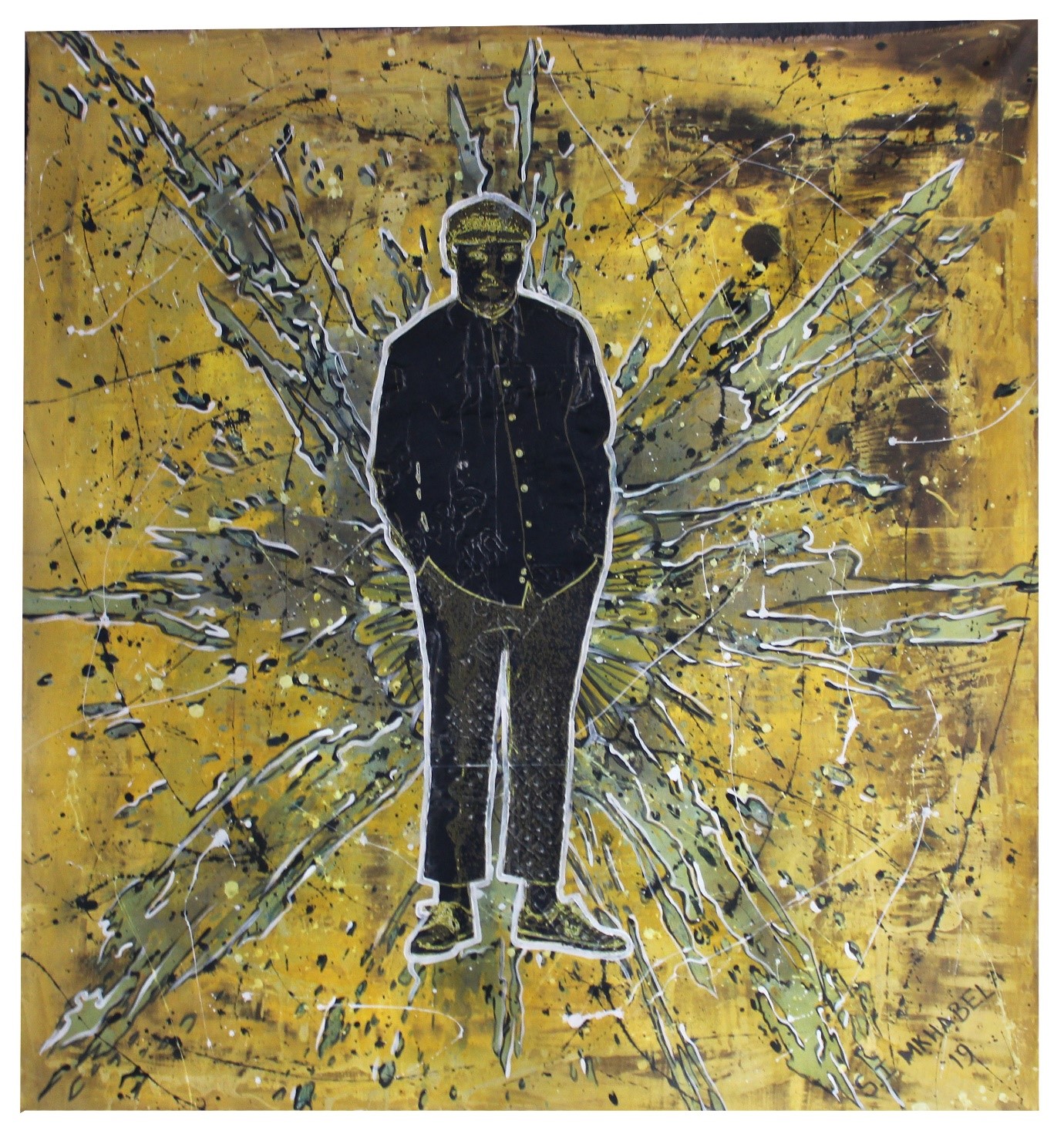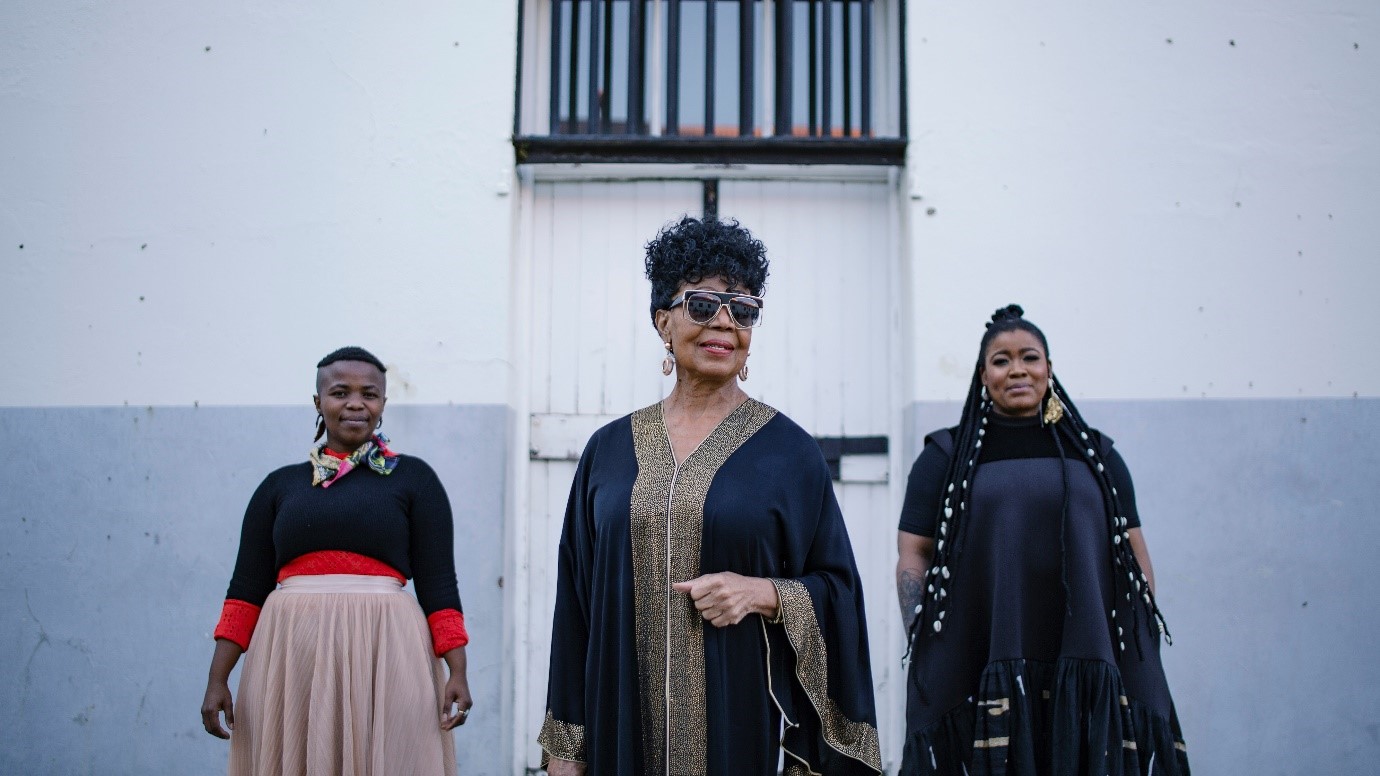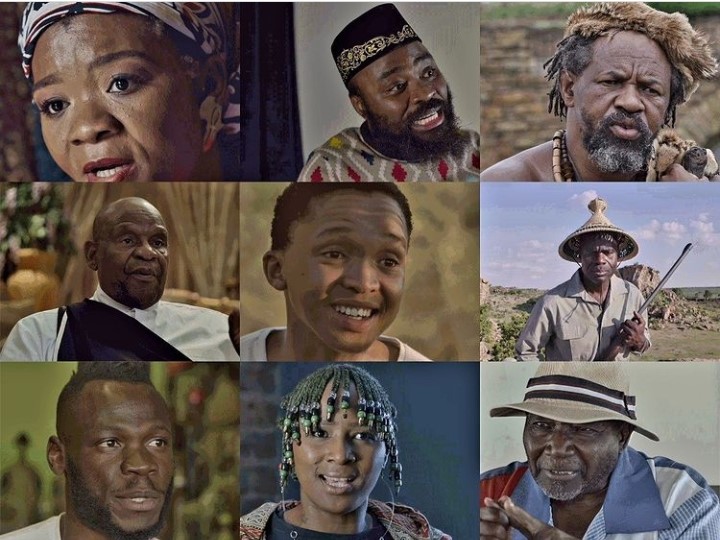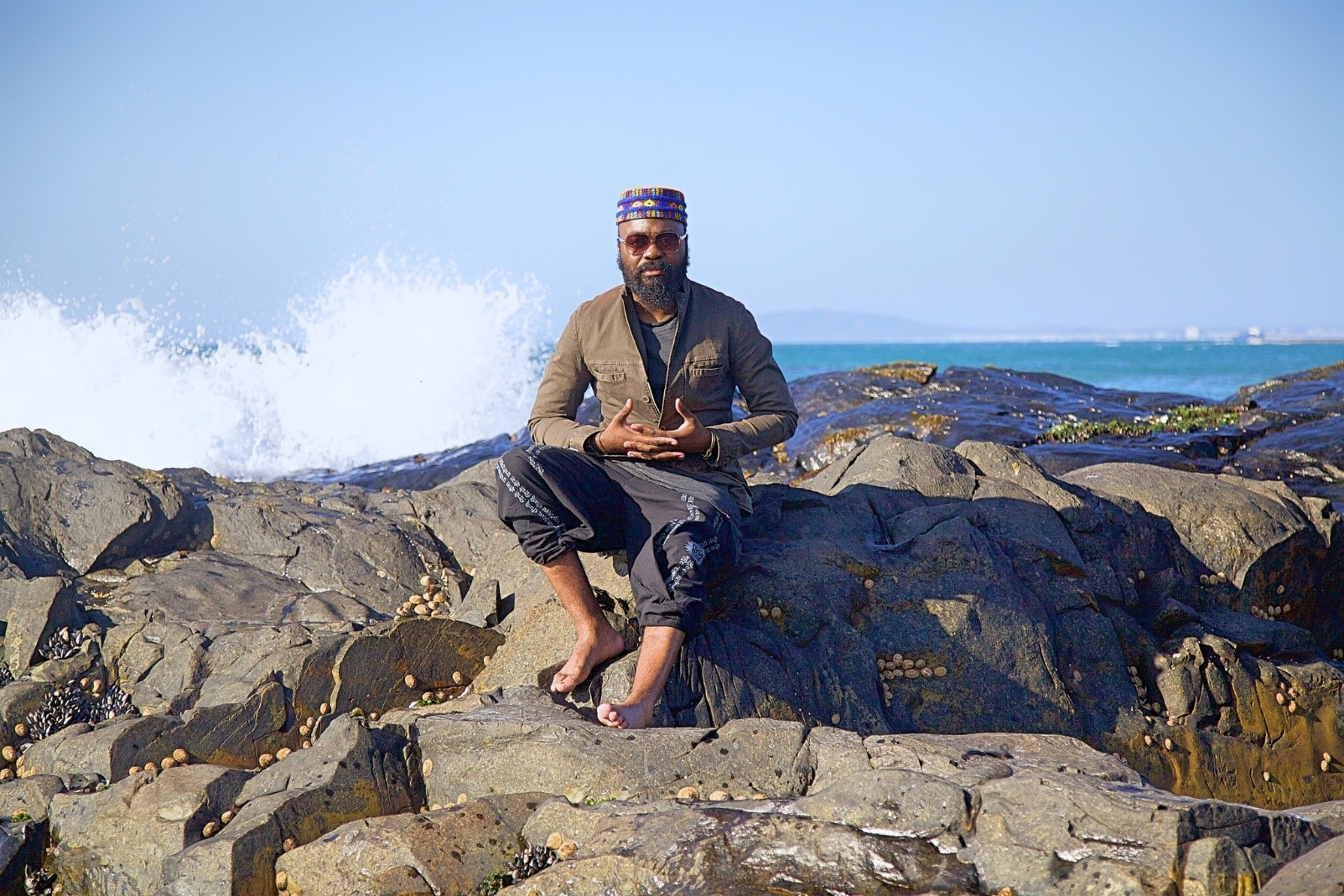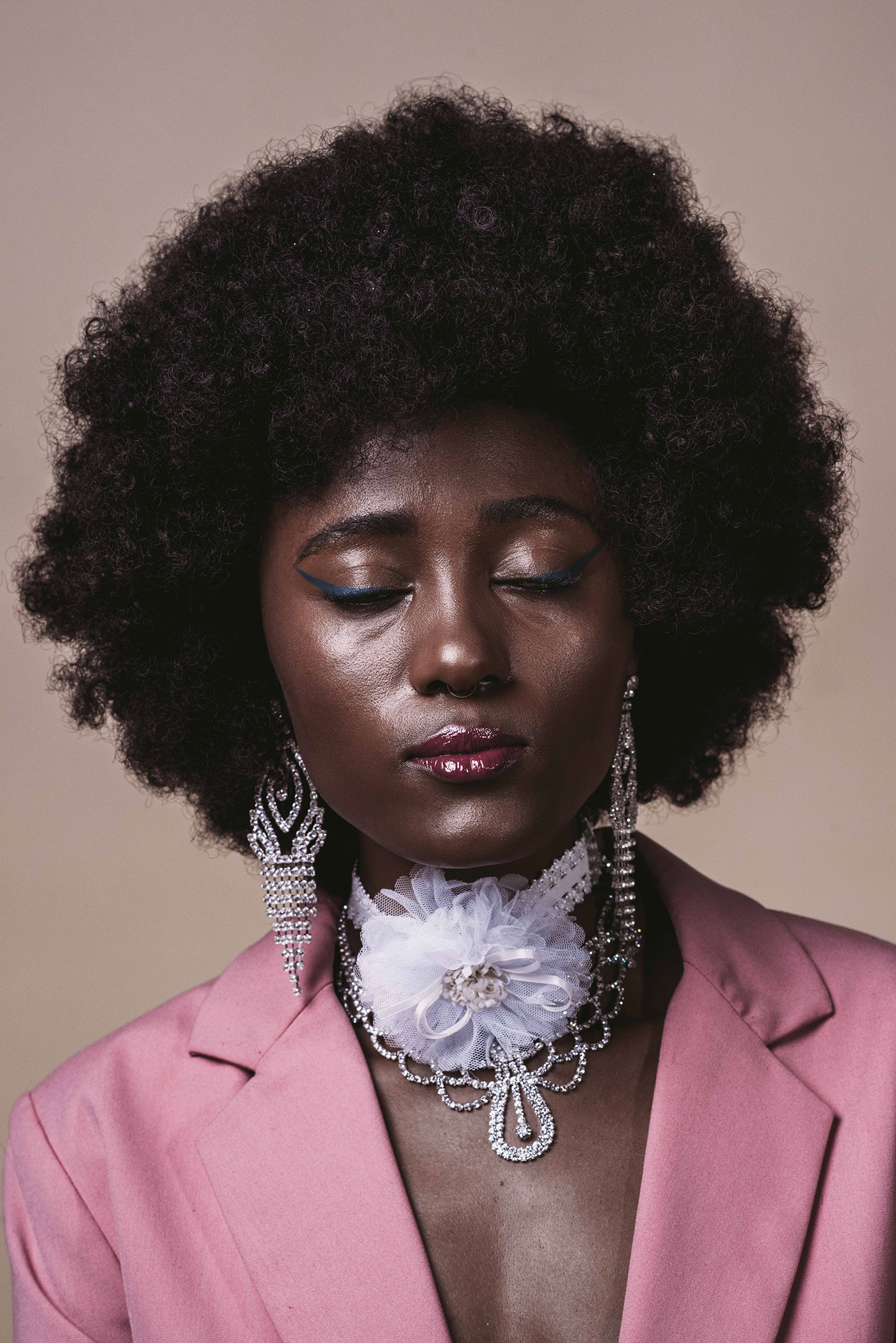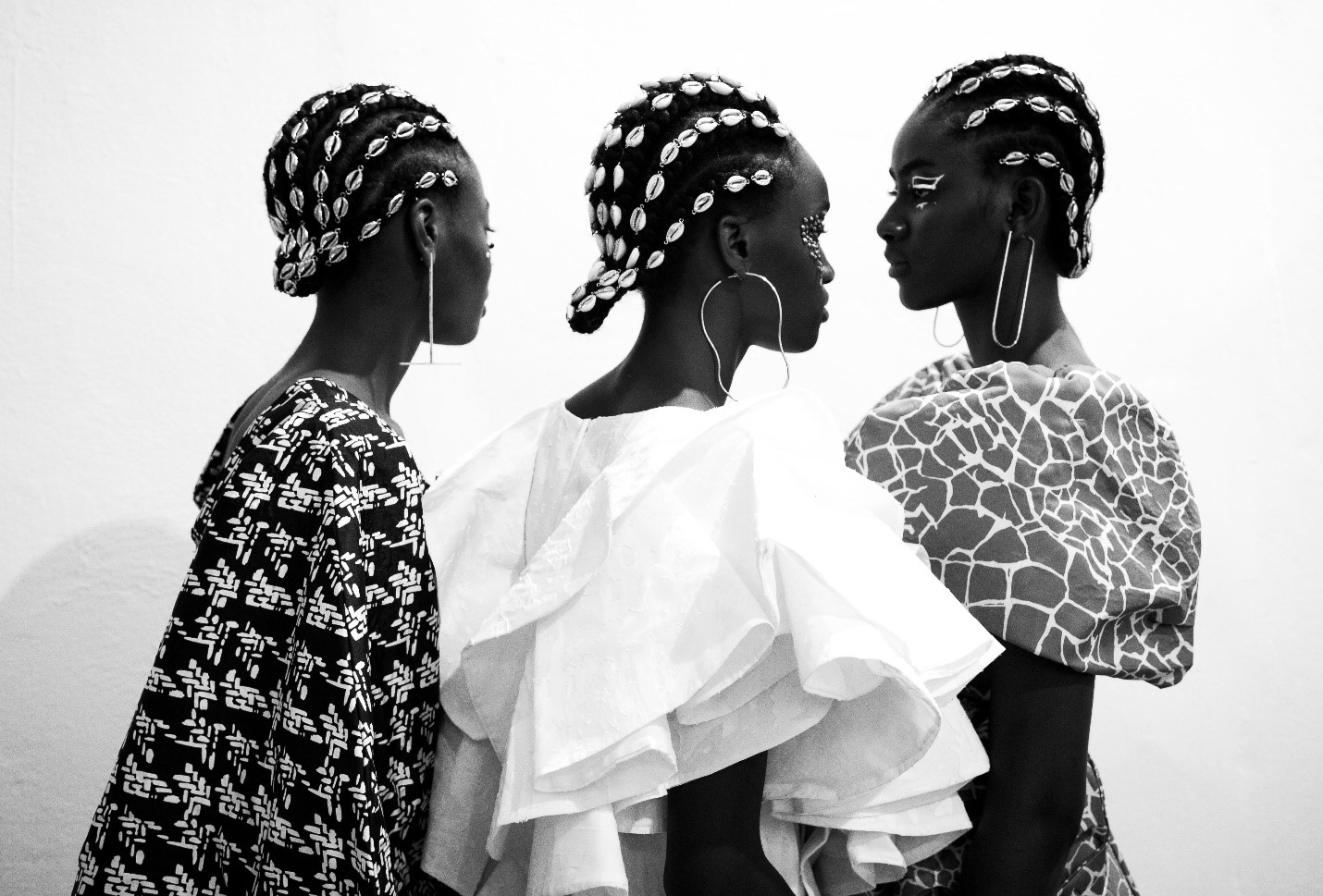Ntirho lowuntshwa wa Sifiso Mkhabela wa swifaniso swo dirowiwa no pendiwa ari kari a tirhisa swo hambanahambana ku endla ntirho lowu, wu nghenelela ngopfu eku hlumusela maendlelo ya ku tlhaveriwa(Ukugcatjwa) – Kunga kona kunga tsemeleriwaka hi xi rezani hi na’nga.
Ndlela leyi anga hundza ka yona hikwalaho ka lava ku tiva ndhavuko wa yena yi endlile Mkhabela ava na ku chava hikuva hile swintswa ka yena na kambe hi yona ndlela leyi thirhisiwaka laha anga thlaveriwaka kuya hi laha anga kunga kona na ndyangu wa ka vona wale Mozambique.
Ntirho lowu wa ku thlaveriwa (Ukugcatjwa) wu endliwa hi na’nga laha yi tsemaka switsongo-ntsongo ka mbirhimbiri emirini hi ndlela leyi faneleke a thlela a chela mapa ya ntima ya murhi wa xintu. Ntirho wa Mkhabela wa swifaniso wu na matsalwa ya fanaka na la ya ndliwaka loko u tsemiwile hi xirezani eku tlhaveriweni(Ukugcatjwa).
Swivati swa ntima swi yimeli ndlela leyi anga hundza eka yona hikuva a lava ku tiva ndhavuko wa yena. Mhani lava vonakaka ka ntirho wa Sifiso i na’nga leyi nga fambisa ntirho wa ku thusiwa (Ukugcatjwa) wa Mkhabela. Ku cina loku ku vonakaka ka swifaniso ku yimela ndlela leyi a yi fambeke hiku lava ku tiva Ndhavuko wa yena wa le Mozambique a ri kharhi a tshama eAfrica-Dzonga.
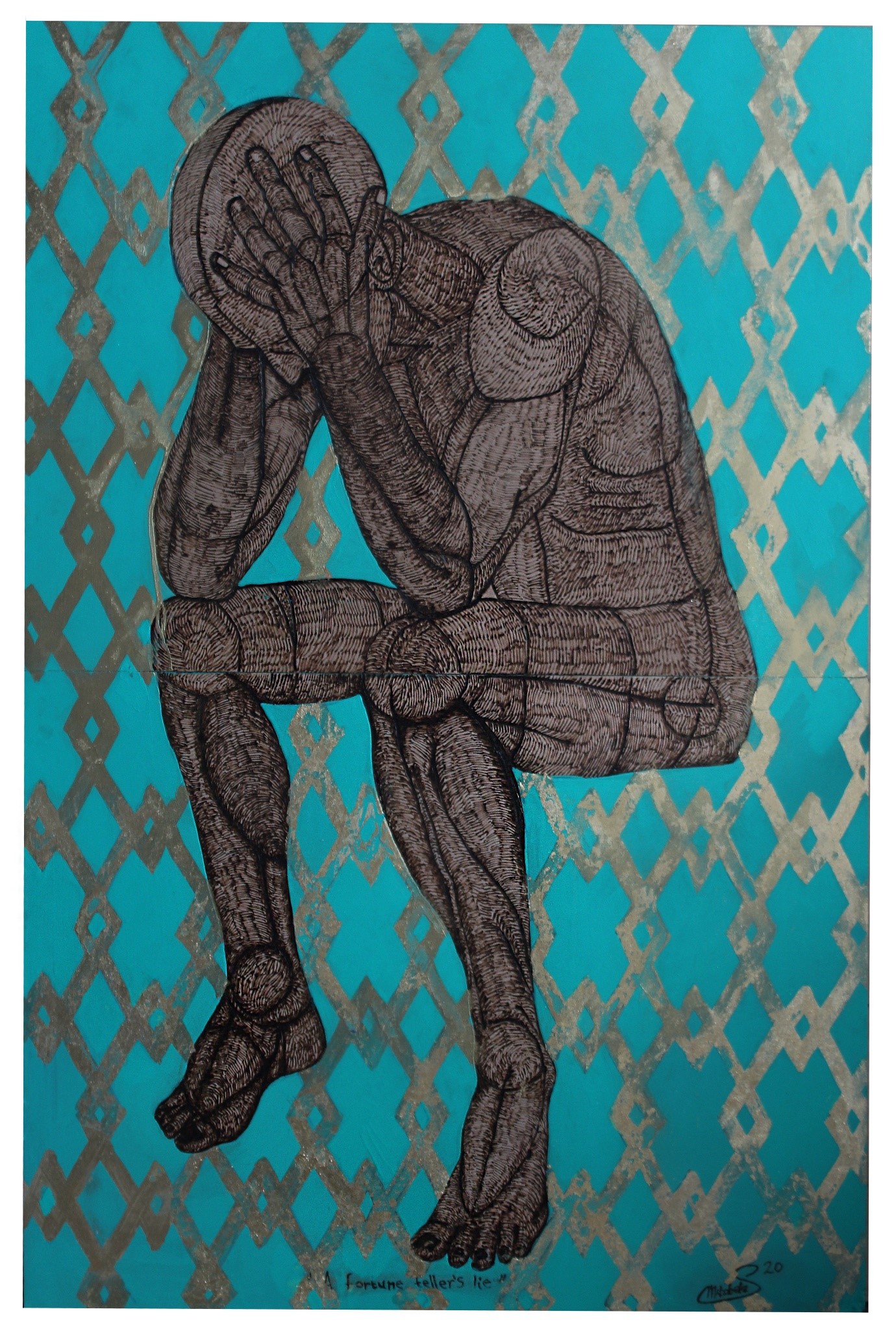
The Mirror Has Many Faces: Reimagining the Cognitive Power of Culture
Sifiso Mkhabela’s latest body of work is an ongoing exploration of figurative paintings, mixed media works and drawings that imitate and document the process of Ukugcatjwa – a traditional ceremony of mark-making through incisions and initiation. The narrative lends itself as an expression of the culture shock Mkhabela experienced as a result of having to participate in the right of passage when he met his Mozambican family for the first time.
The ceremonial process of Ukugcatjwa is normally performed by a healer or a Sangoma, who makes two incisions on the skin with a razor blade laced with a black powdered mixture of medicine. Similarly, Mkhabela‘s drawings have a texture that is similar to the scars one receives as a result of the ceremonial practice. The markings are black as an expression of the culture shock and are used as a visual metaphor for the artist’s experience of cultural displacement.
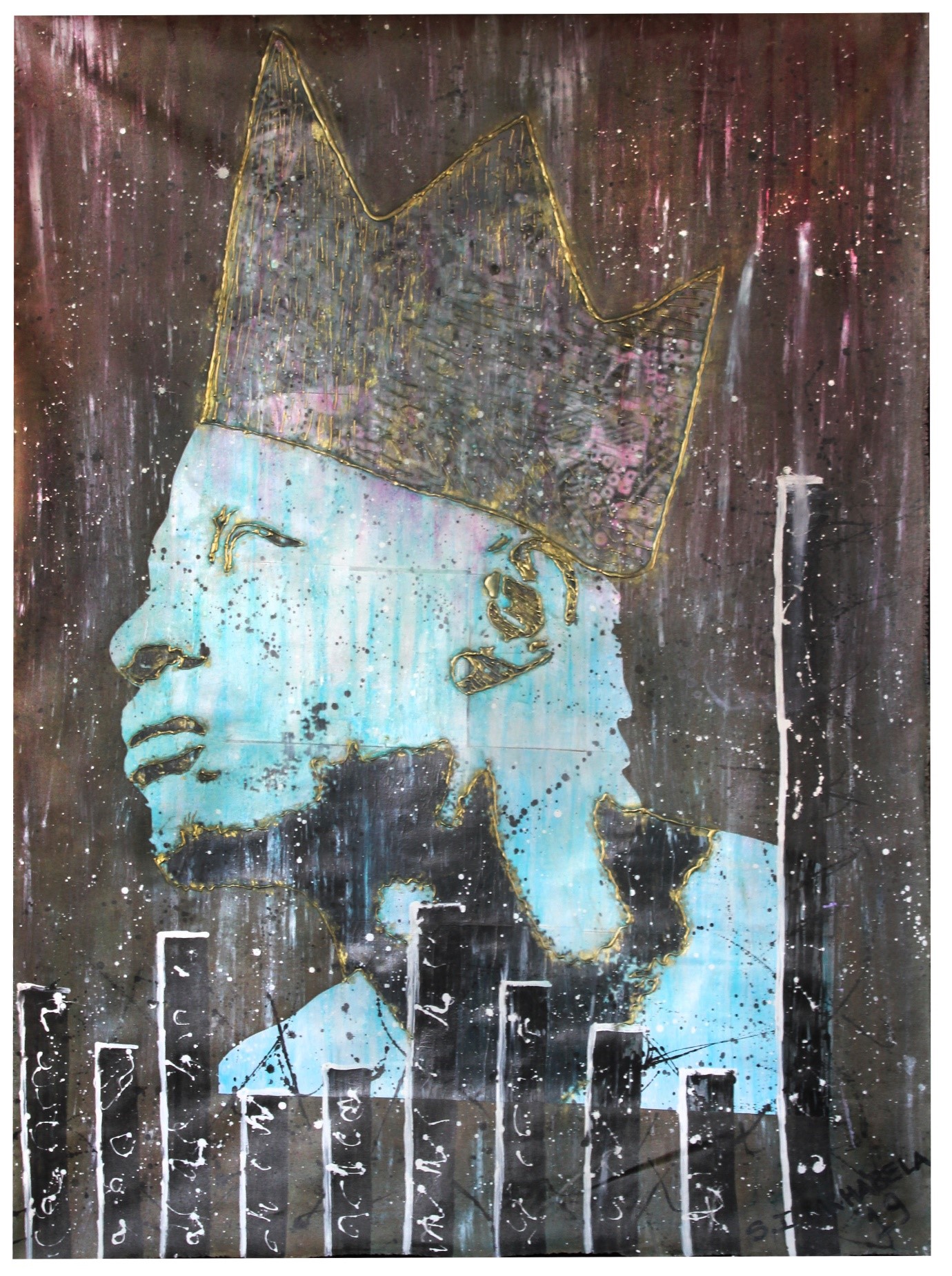
The female figures that Sifiso incorporates in the works represent the “unknown” and “faceless” female healer that performed his ceremony. Movement conveyed in the figures and their relation to one another symbolise his journey and cultural initiation as a Mozambican located within South Africa.
*The Inaugural exhibition, Gallery Fanon and The Anthill will open to the public on Heritage Day Thursday, 24 September 2020 from 10:00 – 18:00.
The exhibition runs from 25 September to 25 October 2020.
-Kindly RSVP your attendance, curate@galleryfanon.co.za/ Gallery Fanon
Gallery Fanon, 281 Commissioner Street, The Anthill, Maboneng, 2043, Johannesburg.

